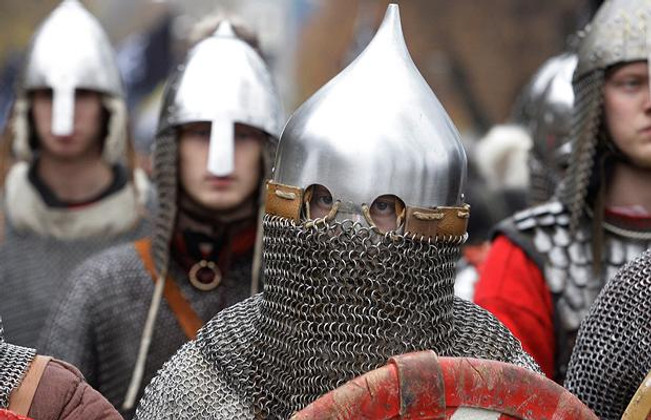The Keys to Sizing Ancient and Medieval Armor Properly
Posted by Sword N Armory on Dec 15th 2019
Throughout history armor has been used on and off of the battlefield. Armor also came in a variety of medium; plate, mail, leather, and even cloth. On the battlefield, armor was used to protect soldiers, generals, and even kings from injuries sustained from weapons. Off of the battlefield, armor was worn in ceremonies and public addresses. It’s important to understand that there was very seldom a “one size fits all” method. Sizing of armor all depended on who was going to wear it. Many generals, knights, and kings, and even children and adolescents had their armor custom made while the common foot soldiers of antiquity mostly had several sizes that they could choose from until they found a set that matched them as closely as possible.
Most helmets for the noble were made to fit. Not only did the maker of the helmet take a head size from the person that was commissioning the helmet, but they also added a little bit of area to accommodate a hood that was commonly worn underneath the helmet. This gave an added level of comfort as well as stability to the helmet so that it would stay in place and be most effect at deflecting strikes from edged weapons as well as blows from bludgeoned ones. For soldiers, helmets were commonly made in standard sizes and then the solider would try them on until they found one that seemed to fit the best while wearing a hood.
Breastplates
Breastplates made of plate or leather were tailored to the person. This is due to the fact that there were inner layers of material that were worn underneath the breastplate. The creator of the breastplate would have to take this into consideration when crafting the piece so that there would be enough room to allow for the under garments and to also avoid constriction and aid in range of movement on the battlefield. For soldiers, once again, breastplates were typically made in standard sizes and a solider would have to go through them until they found a breastplate that seemed to fit them well, aided in range of motion, and impeded constriction.
Leggings and Boots
Leggings and boots for the noble were custom made so that it fit their legs and feet properly. This was very important since many of the noble would be on horseback. They needed as much range of motion as possible to maneuver on and off of a horse. If the boots or leggings were too tight that could end up impairing their ability at fluid movements on the battlefield and could end up costing them their lives. As with the breastplate, there were under garments that were worn underneath these pieces of armor, and this was taken into consideration at the time of construction. For the common foot soldier, leggings came in only a few standard sizes whereas boots were available in many sizes. This was due to the fact that it was important for a soldier to have properly fitted footwear for long campaigns and marches. It was equally as important on the battlefield. In some cases, leggings were also custom made for soldiers who had unique dimensions and a heightened status in the military due to previous victories.
Gauntlets
Gauntlets for the noble, as with most other pieces, were custom made. They were very often lined with different materials such as wool, silk, and cotton. This was not only to make them comfortable to wear, but it was also to help insulate their fingers in harsh climates to decrease the chances of frostbite. For the foot soldier, there were several different sizes of gauntlets, but they were not necessarily custom made for each soldier. Generals wanted to make sure that their soldiers had gauntlets that fit correctly due to the high frequency of hand-to-hand combat out on the field. The difference between a properly fitting gauntlet and a poorly fitting one could cost the solder their life. Swords needed to be unsheathed, shields needed to be grasped, and maneuverability was key in the construction, and proper fit, of a pair of gauntlets.
Whether the armor was custom made for nobility or mass produced for soldiers it was of paramount importance that the armor was both comfortable and functional in order to allow the individual to perform their tasks. Failure to do so would, at the very least, cost the individual their life, and, at the very most, could make the difference between victory and defeat on the battlefield.












